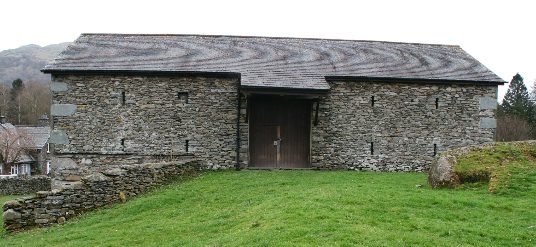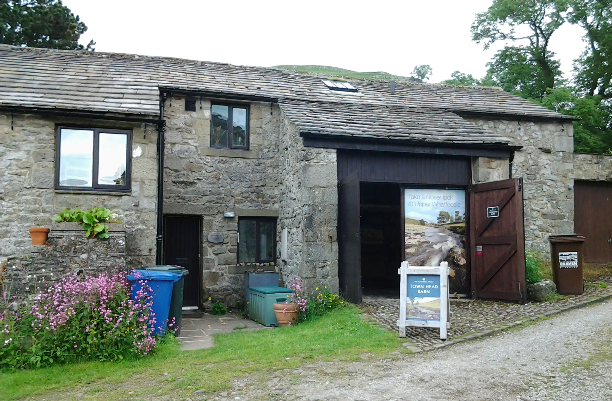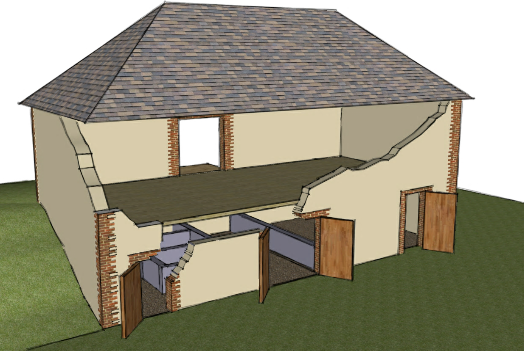A bank barn or banked barn is a style of barn noted for its accessibility, at ground level, on two separate levels. Often built into the side of a hill, or bank, both the upper and the lower floors area could be accessed from ground level, one area at the top of the hill and the other at the bottom. The second level of a bank barn also could be accessed from a ramp if a hill was not available.
The bank barn had made its first appearance in Cumbria by the 1660s on the farms of wealthy farmers: here farmers bought drove cattle from Scotland and fattened them over winter before selling them in spring. The bank barn at Townend Farm, Troutbeck (top right) in former Cumberland was built for the prominent Browne family in 1666. The great majority of bank barns were built in Cumbria between 1750 and 1860, and the last were built just before the First World War.
(From Wikipedia, the free encyclopedia)



